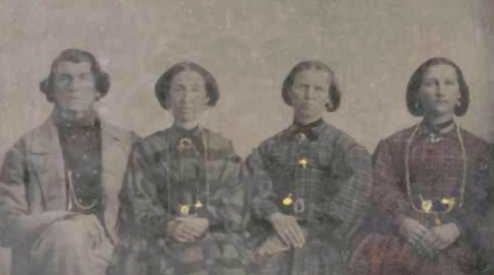Originally published on Forbes.com Dec 17th, 2013
It didn’t take long after Judge Clark Waddoups ruled unconstitutional the Utah law that was plaguing Kody Brown and the Sister Wives for tax geeks to start thinking about the possible implications. Joe Kristan tweeted, perhaps selfishly, that if he has to start doing consolidated individual returns he is going to quit.
It turns out that Professor Samuel Brunson of Loyola University School of Law has already written an extensive paper on the tax implications of full legalization of polygamy (That is not what Judge Waddoups ruling created, but give them time.) I note in his bio that Professor Brunson received his bachelor’s degree from a college named after a fellow who had 55 wives. I don’t know if that gives the Professor any special insight into the subject, but it can’t hurt. Before I get into Professor Brunson’s article, there is a possible tax planning move for some polygamous families that Judge Waddoups’s decision may have just opened up. That would be Code Section 501(d) organizations.
Religious and apostolic organizations
The following organizations are referred to in subsection (a): Religious or apostolic associations or corporations, if such associations or corporations have a common treasury or community treasury, even if such associations or corporations engage in business for the common benefit of the members, but only if the members thereof include (at the time of filing their returns) in their gross income their entire pro rata shares, whether distributed or not, of the taxable income of the association or corporation for such year. Any amount so included in the gross income of a member shall be treated as a dividend received.
Where Did I Get Such An Idea?
Just last March, I wrote a post that turned out to be a little prescient. It started out with:
Thanks in part to “reality” TV, the practice of polygamy may be starting on the path to being normalized. Check this out.
The post was about PLR 201310047 which denied exempt status under 501(d) to an unnamed group (the Group).
A 501(d) organization keeps a common treasury and generally has people living in a communal manner. It can have commercial activities that generate taxable income. The members pay tax on a pro-rata share of the income. A 501(d) files Form 1065 (Partnership return), although it is not subject to Subchapter K. What is really sweet about 501(d) is that thanks to Revenue Ruling 77-295, the income can be spread to the kiddies. Also there is no self-employment tax.
At any rate, The Group, as I call it, was applying for 501(d) status. It was turned down not because it did not qualify in general, but because its members practiced polygamy in violation of state law. I asked Professor Brunson if he had seen that ruling. It turns out that he is working on an article titled Taxing Utopia. He let me look at a draft. The article also points to PLR 201323025, which denies exempt status under 501(c)(3) to an organization that would:
1. Educate others about polygamous families and their culture;
2. Encourage empowerment of individuals and families from the polygamous
culture; and
3. Provide crises referrals and response to those in the culture.
In both rulings, the IRS denied exemption on public policy grounds. If Judge Waddoups’s ruling in the Brown case is upheld, the IRS may have to revisit those rulings and 501(d) may become a viable option for groups of polygamists. Maybe Kody and the sister wives will be able to split their income 21 ways if they play their cards right.
And For Polygamists Who Don’t Want To Have Communes?
Professor Burnson’s Taxing Polygamy walks through the tax issues that will be raised if polygamy were to be legalized. He believes that legislation would be required and offers five possible approaches.
Refuse to Recognize Polygamous Marriage
Index Tax Brackets to Family Size
Treat the Entire Polygamous Family As an Economic Unit
Balkanized Filing
Mandatory Individual Filing
I really can’t do justice to his weighing of the pros and cons of the various approach. Balkanized filing is a real beaut. Kody would file a joint return with each of the four sister wives. Then there would be some sort of credit. It gets pretty complicated.
Specifically, in order to determine the tax brackets applicable to a balkanized tax return, each tax bracket would be multiplied by (n+1)/2n, where n = the number of returns the polygamous family files.
A lot of people think that accountants are good at math. Some are, but, frankly, you have all the math you need to do tax returns with a fourth-grade education. When you start throwing in algebraic formulas, you will lose a lot of preparers.
The ultimate conclusion is that polygamy would be the final straw to push us back to individual filing. Professor Brunson gives a good summary of the history of how joint-filing evolved. Apparently, we are one of the few countries where it exists.
My own possibly radical view is that it is time for the government to get entirely out of the relationship defining business. Let adults form whatever liaisons and economic units they like. Tax them as individuals. Legal regulation of families should be totally oriented toward the protection of children. I know that many people believe that restricting marriage to people like Ward and June Cleaver who will use their collective wisdom to prevent Wally and the Beaver from being led astray by Eddie Haskell is the solution. Fortunately or unfortunately that horse is already out of the barn.
You can follow me on twitter @peterreillycpa.
Afternote
Professor Brunson’s Taxing Utopia is now available for download. Just be sure to not tell the other tax bloggers about SSRN. I find great material there that is largely overlooked.































































































